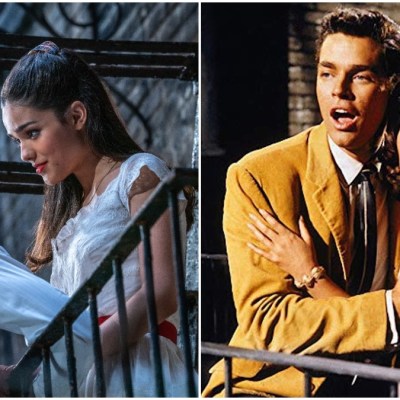Time to share a secret: as much as I respect and admire Guillermo del Toro–not just for many of his films, but for his genuine love of cinema and particularly of genre, and his championing of the latter in all forms–his last several movies have left me cold.
Pacific Rim (2013) and Crimson Peak (2015) were both disappointments, technically impressive and stunning to look at, but lacking in the humanity and emotional resonance that fueled his personal masterpieces like The Devil’s Backbone (2001) and Pan’s Labyrinth (2006). His 2017 Best Picture and Best Director winner, The Shape of Water, was a step back in the right direction, melding his genre concerns with a newfound interest in adult sexuality (yes, even with a sea creature), but its narrative was so predictably laid out that the film never felt surprising or fresh.
So it’s ironic to have the opposite reaction to Nightmare Alley, this week’s new neo noir and psychological thriller, since it’s based on an existing 1946 novel by William Lindsay Gresham and the semi-classic film adaptation that came out a year later. Never having read the book, I also took the relatively rare step of not seeing the original noir either. Even if the bones were already in place from the book and the previous film, Nightmare Alley felt like the first fully personal GDT movie I’ve watched in years, and the most enjoyable.
Nightmare Alley’s screenplay (by del Toro and Kim Morgan) is divided into two halves, and one of the ways in which the movie actually falters is by clearly indicating which half the director himself prefers. The film opens in 1939, somewhere in post-Depression, on-the-cusp-of-WWII America, with Stanton Carlisle (Bradley Cooper) dragging a dead body into a hole in the floor of a rotting house, and then setting the place on fire. Who that body is, and why Carlisle takes the action he does, is revealed later on. But we next track Stanton as he drifts into the orbit of a traveling carnival, which is where the story really begins.
Stanton barely says a word for the first 10 minutes of the movie, instead observing those around him and interacting when he needs to with the characters inside the carnival. He initially gets hired on by the show’s manager, the grizzled, seen-it-all-and-then-some Clem Hoatley (Willem Dafoe), who tasks him with some of the sideshow’s more macabre duties, like the care and feeding of its resident Geek–whose own origins tap into the darker side of these once-iconic traveling freakshows.
Stanton endears himself–physically, then emotionally–to the clairvoyant Zeena (a carnal, invigorating Toni Collette) and her dissolute mentalist husband Pete (David Strathairn) while simultaneously wooing the naïve “electric girl” Molly (Rooney Mara). It’s after obtaining the secrets of Zeena and Pete’s once-successful mentalist act that Stanton sets out on his own, a lovelorn Molly in tow, to revive the act and use it to grift the wealthy elites of Chicago’s upper class. That’s where they meet a psychologist named Dr. Lilith Ritter (Cate Blanchett), whose own desires may match Stanton’s hunger for money and fame.
Read more
Ghosts permeate the narrative of Nightmare Alley. Nearly every character is haunted by the sins of their pasts; how they deal with those transgressions and the collateral human damage determines each character’s arc. As Stanton, Cooper gives a slow burn of a performance that’s in lockstep with the deliberate pace of the movie itself, gradually revealing just how corrupt this charismatic grifter can get.
He’s matched in intensity by Blanchett, who doesn’t hide her venality but slowly exposes the twisted psyche inside her hardened exterior. If Nightmare Alley has a major flaw, it’s that Cooper and Blanchett don’t get enough time to build up any kind of real spark–they’re drawn to each other because the story ultimately dictates it, but no natural chemistry ever really develops.
That’s because, as mentioned above, it seems like del Toro is far more interested in the carnival half of the story than the Chicago half. It is in the environs of the “Ten-In-One” sideshow that he feels most at home, as we get to spend time with its human attractions and see how they–often outcast from society or their own families–form a close-knit, protective, even loving tribe of their own. It’s seedy, to be sure, and in the case of the Geek also illegal and unsavory, but it’s obvious that del Toro relishes spending time with these “monsters” and digging into their humanity.
Stanton and Molly’s departure from the carnival marks their departure from any kind of semblance of humanity and even grace: once in Chicago, Stanton becomes cold, distant, and even cruel to Molly while her veneer of purity and empathy is slowly stripped away. Even in a long, leisurely movie like this (157 minutes), this section feels like the part that del Toro just wants to rush through so he can get to his climax, which brings out the blood and uses supernatural-adjacent imagery without going all the way.
That climax is, indeed, a knockout, as is the epilogue that ends the film on a stunningly bleak yet seemingly inevitable note. With the exception of that narrative imbalance between the film’s two halves, del Toro has exceptional control of his material and themes here, putting Stanton on that one-way road to his destiny that is a hallmark of the noir genre. It also leaves us to wonder who else he’s going to drag down with him.
In addition to its largely satisfying plot and finale, Nightmare Alley may be the most beautiful film we’ve seen this year. Cinematographer Dan Laustsen shoots the hell out of it, getting the kind of painterly compositions onto the screen that made earlier del Toro works like Pan’s Labyrinth so memorable. Meanwhile production designer Tamara Deverell and costume designer Luis Sequeira recreate both the dusty, muddy environs of the sideshow and the art deco gleam of extravagant New York hotels and offices in outstanding, visceral detail.
Nightmare Alley may move a bit too methodically for some and may leave others disappointed with its lack of the otherworldly, but it rewards patience and concentration with a rich, lavishly mounted psychological drama peopled by an exceptional cast. If it’s not quite top tier GDT, it certainly recaptures that special alchemy–the nexus of the humane and the hideous–at the heart of his best work.
Nightmare Alley is out in theaters on Friday, Dec. 17.


